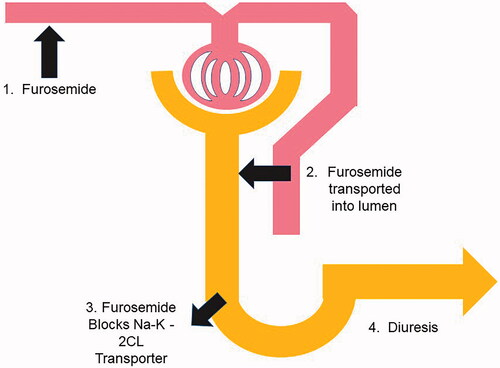Figures & data
Table 1. Altered bioactions of furosemide in critically ill patients with acute kidney injury.
Table 2. Summary of furosemide challenge tests.
Table 3. Proposed utilization of urinary furosemide and urinary sodium with decreased urine response to FST.


